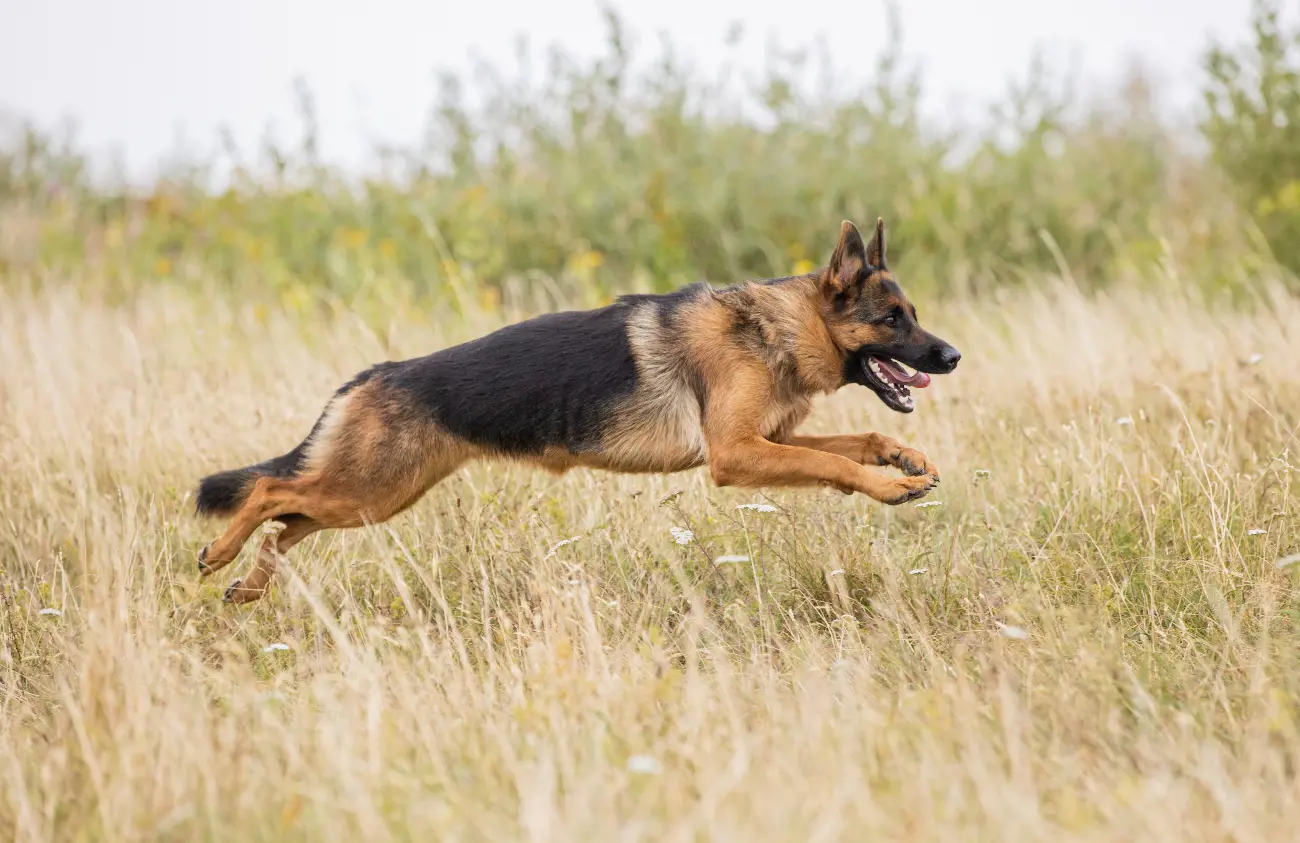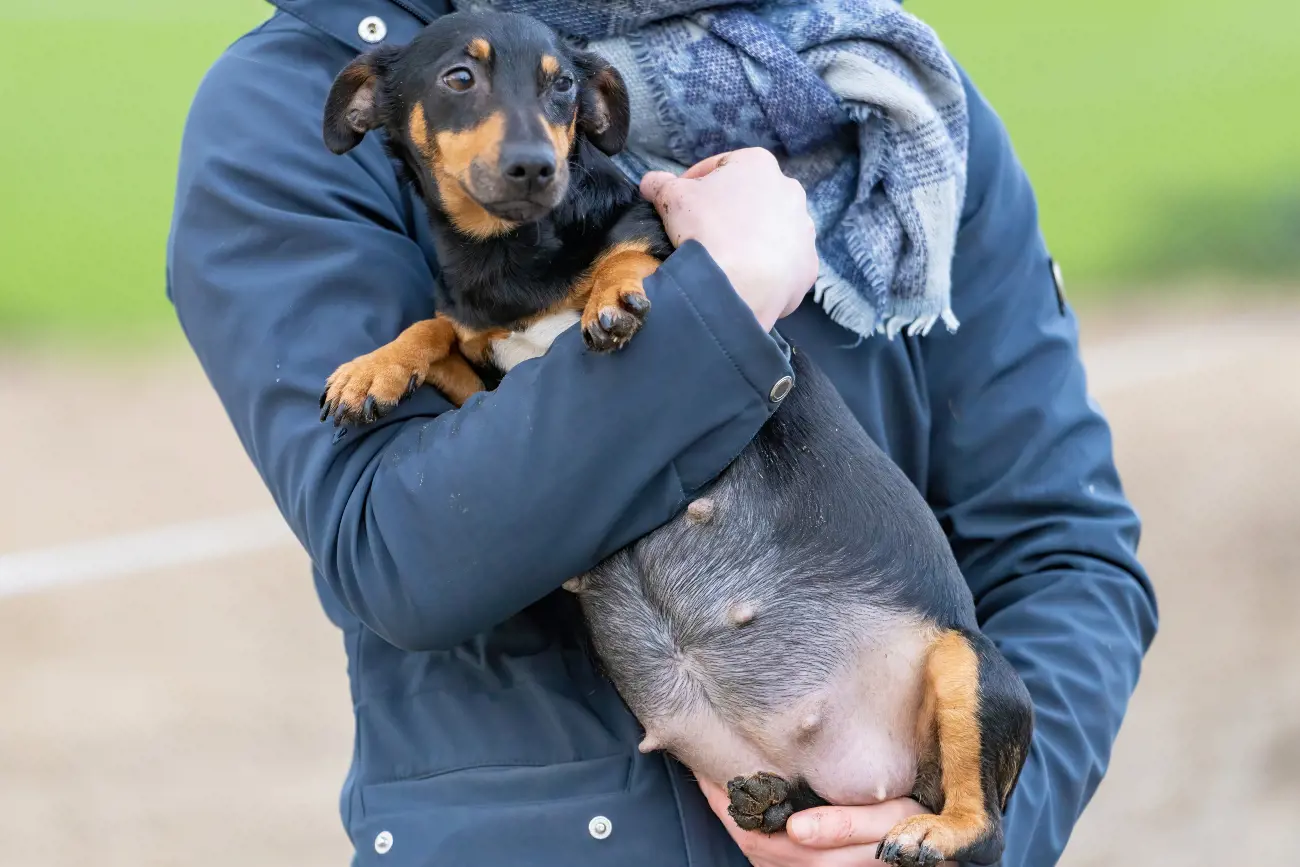Dog training basics
4th January, 2024
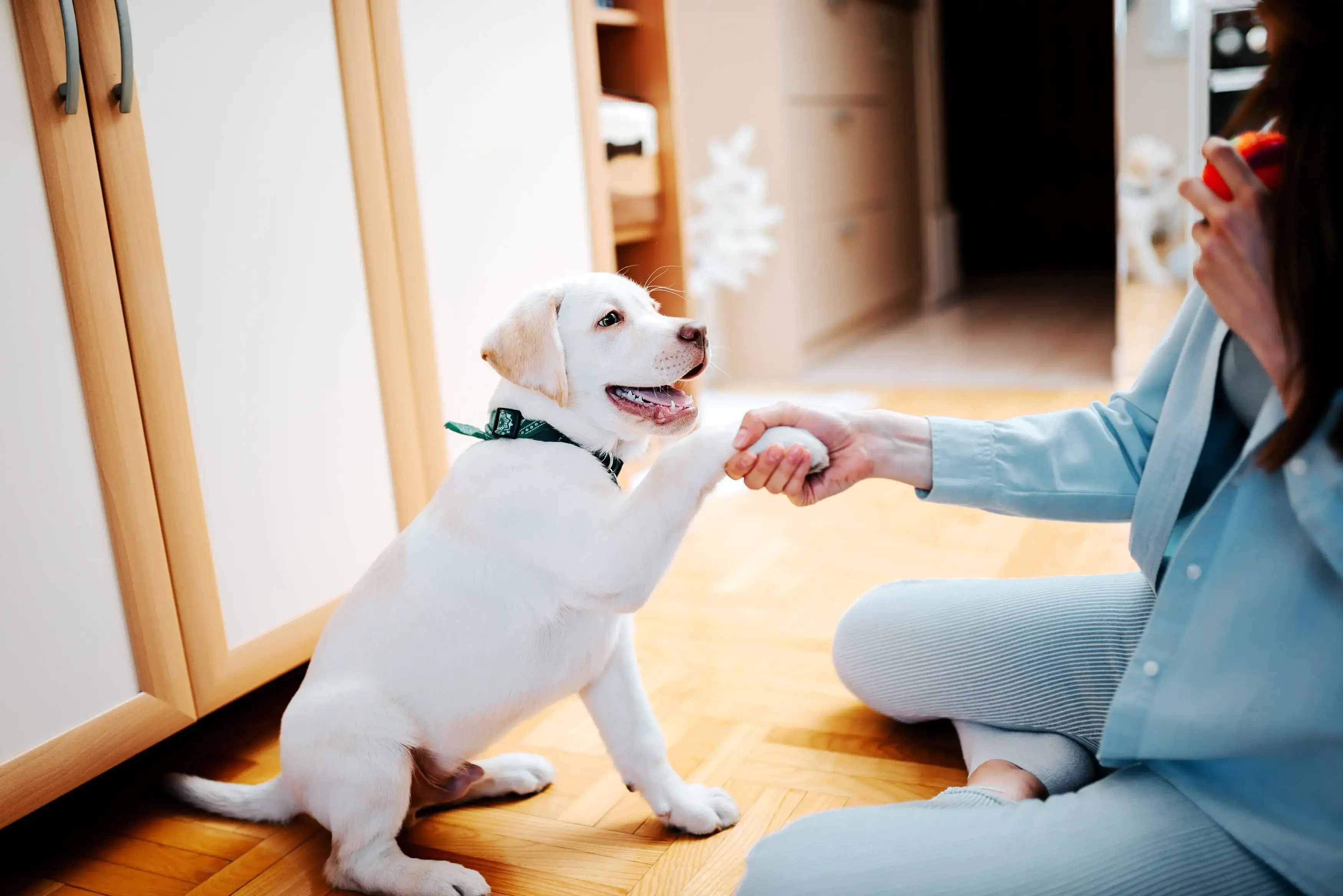
Are you ready to embark on a journey of understanding and training your furry friend?
Dog training basics are essential for building a strong bond with your canine companion.
Did you know that over 70% of dogs in the United Kingdom exhibit some form of behavioural issue? But fear not, with the right knowledge, basic tricks, and techniques, you can help your dog become a well-behaved and happy member of your family.
In this guide, we will explore how to understand your dog's behaviour, establish leadership and boundaries, use positive reinforcement techniques to correct behaviour, teach basic obedience commands, socialise your dog, and address common behaviour issues.
By maintaining consistency and patience, you can transform your dog into a well-mannered and obedient companion. Let's get started on this exciting journey together!
But before we jump in... we also have a video series teaching you a few training basics with a visual demonstration as well! Learn how to teach your dog how to lie down here.
Things to consider
- Understanding dog behaviour through body language helps in interpreting their emotions and reactions.
- Establishing clear rules and expectations helps in establishing leadership and boundaries with your dog.
- Consistent reinforcement techniques, including positive reinforcement, help in training and shaping your dog's behaviour.
- Making sure that your dog has more positive than negative interactions with you may help to get that relationship between the two of you off to a positive future!
Understanding your dog
To effectively train your dog's response to you, it's important to familiarise yourself with their behaviour patterns.
Body language and 'triggers' are a couple of key components for successful training.
Dogs communicate primarily through body language, using their ears, tail, eyes, and posture to express their emotions. Reading these (sometimes subtle) hints can help you to better understand what your dog is feeling, allowing you to react (or not react) in a better way.
For example, a wagging tail with relaxed body language indicates happiness, while a tucked tail and cowering posture suggests fear or anxiety.
Identifying triggers is another important aspect of understanding your dog's behaviour. Triggers are situations or stimuli that cause your dog to react in a certain way, such as barking, growling, or becoming aggressive.
Loud noises, strange (to the dog) people or animals, or seemingly random objects can all be examples of triggers for your little friend (you'll eventually find out what 'sets off' your dog, you may find new triggers in the future as well! Always keep in mind what your dog does and doesn't seem to like).
By identifying these triggers, you can avoid or manage them during training sessions, helping your dog feel more comfortable and reducing unwanted behaviours.
If you've just brought a puppy into the family, we have a dedicated guide to training your puppy here.
Establishing leadership and boundaries
To establish leadership and boundaries with your dog, it's crucial to set clear rules and expectations. Consistent reinforcement techniques will help your dog understand what behaviours are acceptable and what are not.
Building trust and respect through positive interactions and rewards will strengthen your bond and establish you as the leader in your dog's eyes.
Clear rules and expectations
Establishing clear rules and expectations is essential for effective dog training.
When you set boundaries and establish household rules for house training, you provide structure and guidance for your dog, helping them understand what's expected of them.
Here are three important aspects to consider when setting clear rules and expectations for your dog:
- Consistency: Dogs thrive on routine and consistency. Establish consistent, short (if possible) rules and expectations to avoid confusing your dog and promote learning quickly & without too many signals.
- Clarity: Be clear and specific about what behaviours are acceptable and which ones you'd rather your dog not keep doing. Use clear verbal cues and body language to communicate your expectations to your dog effectively.
- Positive Reinforcement: Reward your dog for being obedient and following your lead (pun intended). Positive reinforcement does what it says on the tin, the more positivity your dog associates with your methods, the easier this entire process is going to be.
Positive Reinforcement techniques
When it comes to training your dog, positive reinforcement techniques are essential for effective results. By using rewards and praise, you can encourage and reinforce desirable behaviours in your dog.
This approach focuses on rewarding good behaviour rather than punishing bad behaviour, creating a positive, fun, and enjoyable training experience for both you and your furry friend.
Effective reward-based training
For successful dog training, it's essential to utilise positive reinforcement techniques through the consistent use of rewards.
By focusing on rewarding desired behaviours, you can effectively communicate with your dog and encourage them to repeat those behaviours in the future. Here are three key tips for effective reward-based training:
- Timing is crucial: Ensure that you deliver the reward immediately after your dog performs the desired behaviour. This helps them make the connection between their action and the reward, reinforcing the behaviour.
- Use high-value rewards: Find out what motivates your dog the most, whether it's treats, toys, or praise. Use these rewards consistently to keep your dog engaged and eager to learn.
- Gradually fade out rewards: As your dog becomes more proficient in a behaviour, start reducing the frequency of rewards. This helps them understand that the behaviour itself is rewarding, not just the treat or toy.
Encouraging desirable behaviour
Encourage your dog's desirable behaviour through the effective use of positive reinforcement techniques.
Positive reinforcement is a powerful tool in dog training, as it rewards and reinforces good behaviour, making it more likely to be repeated.
By using positive reinforcement, such as treats, praise, and playtime, you can teach your dog new tricks and reinforce desired behaviours like potty training.
Positive Reinforcement
- Builds trust and strengthens the bond between you and your dog
- Encourages a willingness to learn and follow commands
- Rewarding your dog with treats and praise for going 'toilet' outside
Basic obedience commands
To establish a foundation of obedience, start by incorporating basic commands into your dog's training regime.
Teaching your dog these fundamental commands is essential for their safety and well-being. Here are three basic obedience commands to start basic dog training commands with:
By incorporating these basic obedience commands into your dog's training, you'll establish a strong foundation for further training and ensure their safety and well-being.
Teaching your dog basic obedience commands like "sit", "stay", and "come" can provide a strong foundation for good habits.
The command "Sit"
The "sit" command is a great way to establish control and prevent unruly behaviour.
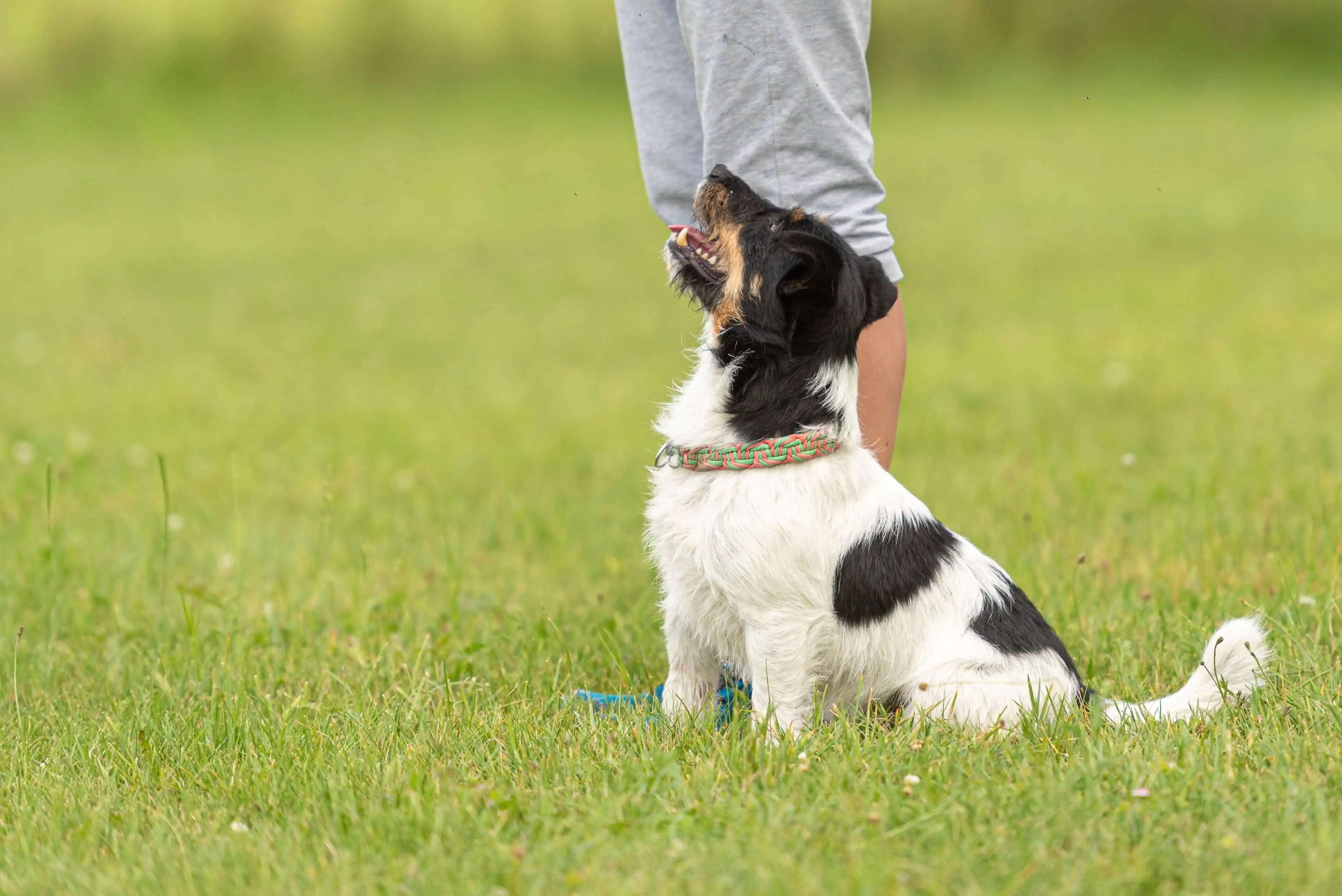
Encourage your dog to sit by gently pressing down on their hindquarters while saying the command. Always remember to reward your pet when they obey.
Eventually, you will be able to ‘upgrade’ your training to a purely verbal approach once the sit routine has been established.
The command "Stay"
The "stay" command may help to keep your dog safe in unpredictable situations or at road crossings, etc.
Start by having your dog sit, then hold your hand in front of their face and say "stay".
Gradually increase the distance over time, rewarding your dog for staying in place until you give them the release command.
The command "Come"
Begin in a low-distraction environment and call your dog's name followed by the command.
Reward them generously when they respond promptly. The great part about teaching this command is that you can incorporate the ‘sit’ and ‘stay’ commands into your routine as well!
Begin with ‘sit’, then command your pet to ‘stay’, and finish off your routine with the ‘come’ command; effectively working in all three of the commands we have covered!
Behavioural issues such as excessive barking or jumping can be challenging for pet owners. However, with patience, understanding, and the right techniques, these issues can be managed effectively.
Quick training tips
Crate training
Crate training can be an effective solution for managing issues like excessive barking or destructive chewing if your furry friend is not much of a traveller.
Ensure the crate is a positive and comfortable space for your pet (e.g. make sure the crate is always clean, there aren’t any unfamiliar toys/objects placed inside, add a small blanket inside to make things more comfortable, and even place one of your dog’s favourite chew toys in there as well).
Use treats and praise to encourage them to enter the crate willingly, but never use it as a form of punishment.
Lead training
Lead pulling can be frustrating and potentially dangerous.
Teach your dog to walk politely on a lead using positive reinforcement. If your dog starts to pull, stop walking until they return to your side before continuing.
For lead training to work, start off at less busy times of the day and go for a walk where there are going to be fewer people/other dogs (distractions in general e.g., road works etc.).
Continue your training in these ‘controlled’ areas to begin with then gradually introduce your dog into busier and busier areas to get them used to people without getting too overstimulated.
The five golden rules of dog training
The five “golden rules” of dog training are:
- Consistency: Ensure all family members use the same commands and rules.
- Positive Reinforcement: Reward good behaviour, never punish bad behaviour.
- Patience: Training takes time, don't rush the process.
- Understanding: Learn about your dog's breed, personality, and body language.
- Socialisation: Expose your dog to a variety of environments and experiences.
The 1-2-3 dog training method
The 1-2-3 dog training method is a simple technique used to discourage unwanted behaviour. Here's how it works:
- When your dog exhibits an unwanted behaviour, say "No" in a firm, but calm voice.
- If your dog continues the behaviour, count "One", then "Two", giving your dog a chance to stop the behaviour after each count.
- If your dog hasn't stopped the behaviour by the count of "Three", gently guide your dog away from the situation.
Now, let's move on to the next important aspect of dog training: socialising your dog.
Socialising your dog
After establishing a foundation of obedience through basic training and commands, it's important to focus on socialising your dog to ensure their positive interactions with other dogs and people.
Socialisation plays a crucial role in the development of your dog's behaviour and temperament., by exposing them to various experiences, you can help them become well-rounded and confident pets.
One way to socialise your dog is through puppy playmates. These playmates allow your dog to interact with other dogs in a controlled and supervised environment.
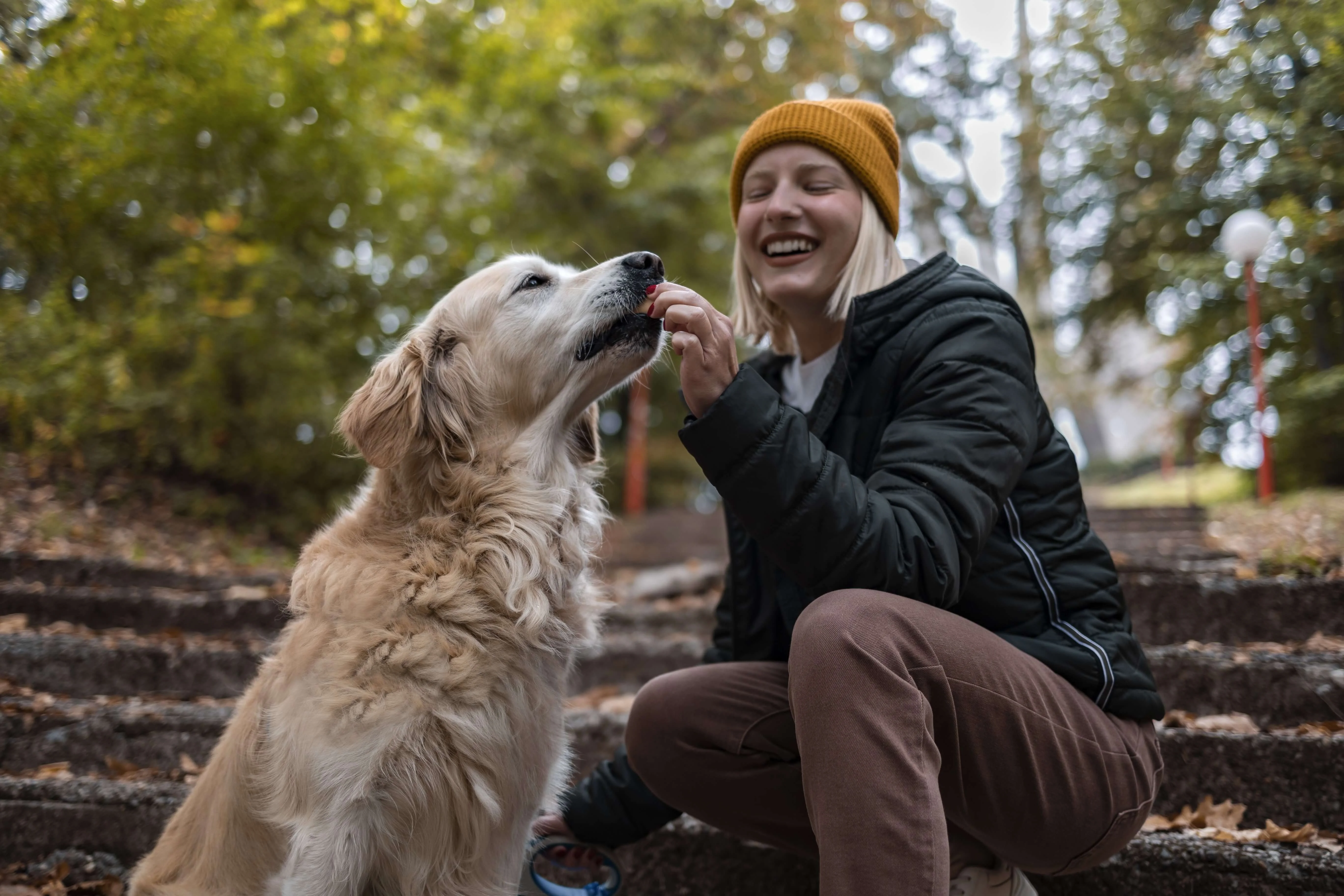
It helps them learn how to communicate and play appropriately with their canine peers. Additionally, it provides an opportunity for them to practise good manners and impulse control.
Another important aspect of socialising your dog is introducing them to new environments. This can include different parks, streets, or even different types of surfaces.
By exposing them to new surroundings, you can help them become comfortable and adaptable in various situations.
Gradually increase the level of difficulty as they become more confident, ensuring that they're always supported and encouraged throughout the process.
Dealing with common behaviour issues
If your dog is exhibiting common behaviour issues, such as excessive barking or jumping, it's important to address these problems early on to ensure a well-behaved and happy pet.
Here are some tips to help you deal with these common behaviour issues:
- Crate training: Crate training can be effective in managing behaviour problems such as excessive barking or destructive chewing. Introduce your dog to the crate gradually, making it a positive and comfortable space for them. Use treats and praise to encourage them to enter the crate voluntarily. Remember to never use the crate as a form of punishment, as it should be a safe and comforting place for your dog.
- Leash lead pulling: Leash Lead pulling can be frustrating and even dangerous. Teach your dog to walk politely on a lead by using positive reinforcement techniques. Start by rewarding them for walking by your side and gradually increase the duration. If your dog starts to pull, stop walking and wait for them to return to your side before continuing. Consistency and patience are key to addressing leash lead pulling.
- Seek professional help: If you're struggling with your dog's behaviour issues, don't hesitate to seek professional help. A certified dog trainer or behaviourist can provide guidance and personalised training plans to address specific behaviour problems. They can help you understand the underlying causes of your dog's behaviour and provide effective solutions.
Frequently asked questions
How long does it take to train a dog using positive reinforcement techniques?
To train a dog using positive reinforcement techniques, it typically takes between 2-6 months and consistency.
Puppies can take a shorter amount of time, whereas older dogs can take significantly longer and may require re-training.
By using short training sessions incorporating methods like rewarding good behaviour and using clear, consistent commands, you can train your dog to walk on a leash lead without pulling and housebreak them effectively.
What should I do if my dog shows signs of aggression during socialisation?
When your dog exhibits signs of aggression during socialisation, it is crucial to respond appropriately to prevent further escalation. Firstly, it’s essential to remove your dog from the situation as calmly and swiftly as possible.
This ensures the safety of all parties involved and can help minimise stress for your pet. Following the incident, do not punish or reprimand your dog aggressively, as this could inadvertently reinforce the undesired behaviour or even escalate it.
Instead, try to identify potential triggers or stressors that may have led to the aggressive behaviour.
These could include unfamiliar environments, certain individuals, other dogs, or specific situations. Understanding these triggers can help you manage future socialisation scenarios more effectively.
Consulting with a professional dog trainer or a canine behaviourist can be extremely beneficial in such instances.
They can provide valuable insights into your dog’s behaviour and offer strategies to manage and eventually eliminate aggression during socialisation.
It is also important to remember that addressing aggressive behaviour in dogs takes time and patience. It’s not an overnight process, but with consistent efforts and professional guidance, your dog can learn to socialise without resorting to aggression.
How do I effectively train a dog that has separation anxiety?
To effectively train a dog with separation anxiety, start by managing their environment to create a sense of security. Gradually increase their alone time, rewarding calm behaviour. Use positive reinforcement techniques and seek a professional trainer for help if needed.
What are some common mistakes to avoid when training a dog?
One of the more common errors is inconsistent training. Owners often struggle to maintain a consistent schedule, leading to confusion for the dog. It’s crucial to establish a routine and stick with it.
Another common error is using negative reinforcement or punishment as a primary training method. This approach can lead to fear, anxiety, and even aggression in dogs. Instead, positive reinforcement techniques such as praise, treats, or toys should be employed to encourage desired behaviours.
Lack of socialisation is another mistake to avoid. Dogs need exposure to different environments, people, and other animals to develop well-rounded behaviours. Failure to properly socialise a dog can lead to fearfulness or aggression.
Expecting quick results is a common pitfall in dog training. Training takes time and every dog learns at their own pace. Rushing the process or becoming frustrated with slow progress can be counterproductive. Patience and persistence are key in successful dog training.
Training your dog is a journey that requires understanding, patience, and consistency. By establishing leadership and boundaries, using positive reinforcement techniques, and teaching your dog basic obedience commands, you can shape your dog’s behaviour effectively.
Socialising your dog is crucial for their development, and dealing with common behaviour issues requires proactive measures. Remember, maintaining consistency and patience is key to achieving success in your dog training journey.
So, grab the lead and embark on this rewarding adventure with your furry companion!
Helpful Pages
Recent Posts

Why do Pugs lick the air?
02/10/24Pet Insurance Quote
- 98% claims paid *
- Claims paid directly to vets
- 24/7 vet video consultations
- Interest free monthly payments


